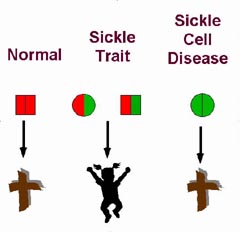Don't you find it incredulous that a dry river bed would be the source of enough sand to produce an erg that is, in the case of the Rub' al Khali, 250,000 square miles with sand dunes as high as 1,080 feet high.
I bought it up as an illustration of the power of radiation to break molecular bonds. I believe that the sand deserts are part of a healthy ecosystem and thus were created at the beginning. I also believe that God originally intended the earth to be eternal, thus the system which would make sand and unmake it.
Ptolemaeus: The crater has a low, irregular outer rim that is heavily worn and impacted with multiple smaller craters.


The moon's circumferance is 1/4 that of earth, hardly a splinter that could be broken off with a glancing blow. Try a little experiment. Take a large rock and a sledge hammer. Try to hit the rock with the sledgehammer using only a glancing blow. Try to hit it hard enough to break of a piece that is 1/4 the circumferance. Such a hit by a meteor would so degrade the orbit as to make it impossible to recover. This meteor strike would not just break off a piece of the crust, It would break off the entire crust.
Climb to the top of the Empire State Building. Drop off a ball of rubber and a ball of steel. Which is affected most by gravity, which hits first? Iron might have sunken quicker than Carbon, but it wouldn't be because of gravity. Density might allow it to pass through other materials more easily while it is molten, but gravity would not pull it faster. The existance of iron, in sizable quantities, disproves your theory that there would be no geological sign remaining of such a deep impact.
So, you are saying that evolution believes that parasites evoved to not be able to synthesize some metabolite, thus forcing them to become a parasite? Can you give me an example of a metabolyte that a particular parasite can no longer synthesize?
The point is, that evolving downward is just as likely and is most often more survivable tha evolving upward.
And where would that place be? Where can human beings survive without tools? We do not graze, and are poorly equipted to hunt without tools. We do not compete well for "volunteer" food. We are not fast or strong. We do not reproduce fast enough. How did we survive before we were clever?
Exactly. But microwaves pierce solid material. Even shaded by the crater, eventually the microwaves will disperse the water into space. Not to mention the effects of the UV range of EM radiation.
You view of the origin of the universe is exactly the same as a deist. Do you believe that this "perfect car" idea also extends to society and psychology?
Second, is genetic mutation. The problem is that mutations are almost always harmful, and when not are at least not beneficial. In order to have a successful mutation by evolutionary standards, one must have a ordinarily harmful mutation coupled with an environmental accident. In other words, the amphibian who lays reptile eggs must accidentally lay them on the land. DNA also has mechanisms for self repair. And, particuarly in the "higher" species, you would need more than one instance. The biggest problem is that genetic mutation isn't just a cause, but a result. Since outside causes of mutations are horrendously distructive to life, evolutionists look to inward causes, believing that genetic change is the normal effect of time to genetic material. This change must occur very slowly, but that brings the problem of the lack of transitional forms.
Genetic mutations are not mostly harmful, they are mostly neutral, and we have observed beneficial mutations both directly and indirectly. You are partially right in your claim that evolution requires a mutation accompanied by a “environmental accident” though I think you’re envisioning this all wrong. It isn’t an environmental accident as much as it is an accident of environment – the mutation itself is completely random, and it is the environment that often selects either for or against it. Take sickle-cell anemia, this genetic condition is the result of a mutation that causes red blood cells to become elongated. Some variants can cause other harmful conditions to arise later in life, so this mutation is usually considered harmful, but in some environments it is actually a beneficial mutation because individuals who carry a single sickle-cell mutated gene are resistant to malaria. Therefore, the beneficial nature of the mutation is a “accident of environment”.
Other beneficial mutations that have been directly observed include bacteria that have evolved to digest nylon and lizards that have evolved to eat plants. In each case the mutation itself was random, and was only “beneficial” as a result of each population’s environment.
http://en.wikipedia.org/wiki/Nylon-eating_bacteria
http://news.nationalgeographic.com/news/2008/04/080421-lizard-evolution.html
Furthermore, genetic mutations are simply a part of the process of sexual reproduction. Each human being, for example, has between 50 and 100 mutations. In essence, genetic mutations are known to produce beneficial mutations that allow organisms to survive better in their environments and which can eventually become “fixed” within a population. Sure, those beneficial ones don’t come around too often, but because beneficial mutations are selected for they don’t have to. Think of it this way, if you have six dice and want to roll all ones there’s virtually no chance of randomly doing so. But if you introduce selection and pick out a dice every time it rolls a one you will very quickly have all six dice exactly where their environment (you wanting all ones) selected them for.
Lurker









